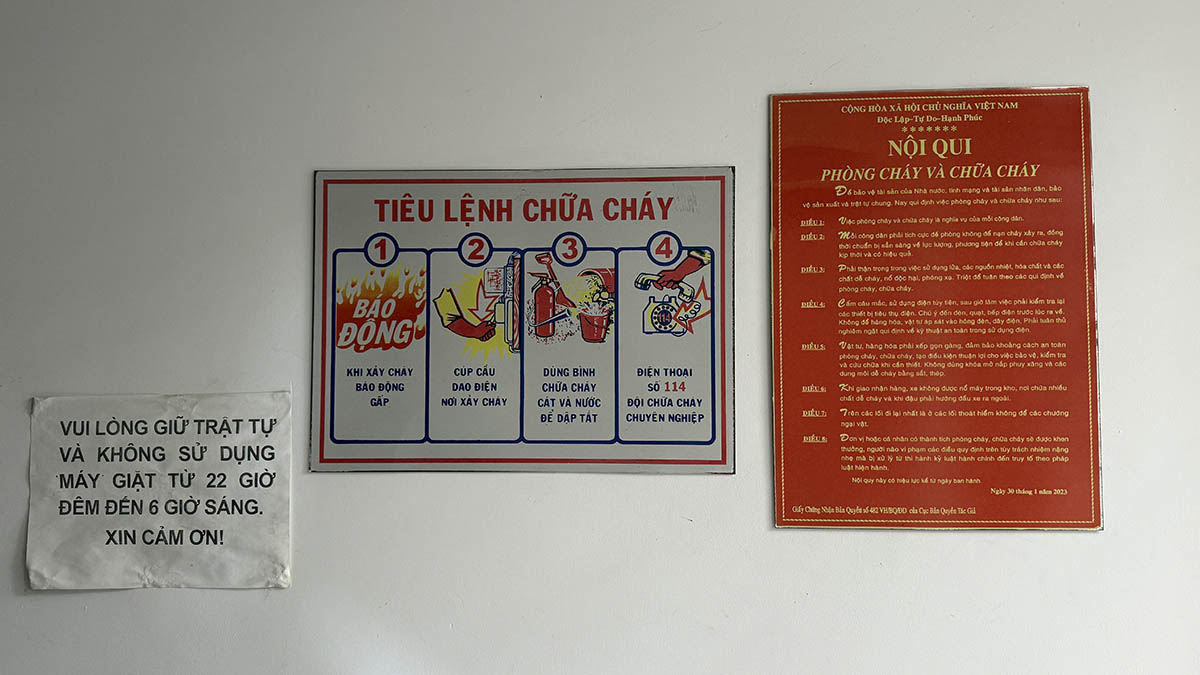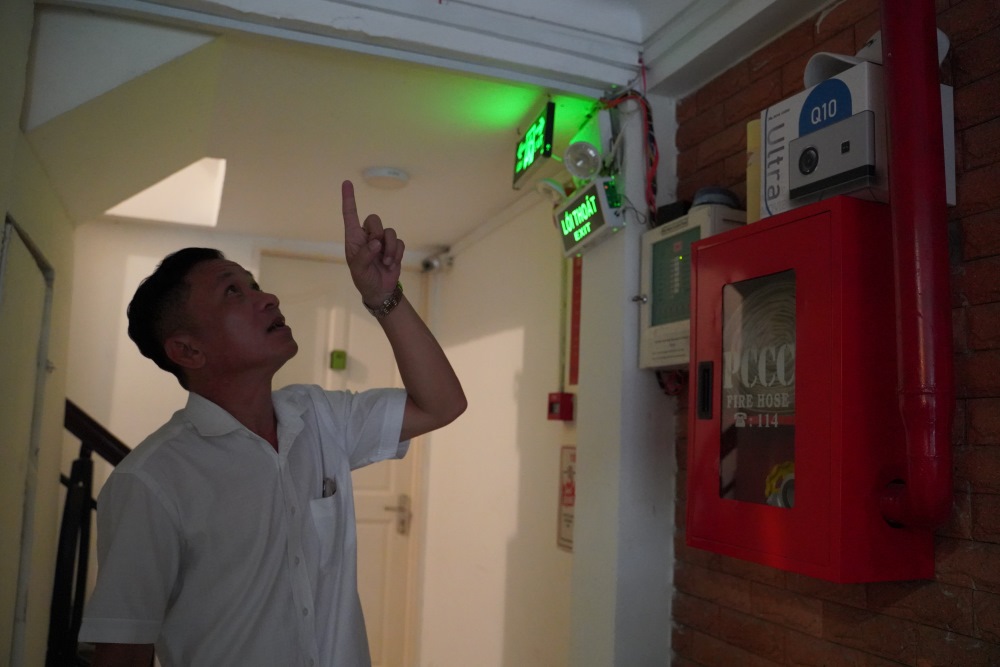After the Prime Minister's Directive 19/CT-TTg on strengthening fire prevention and fighting (PCCC) for multi-storey houses, multi-apartment houses and individual houses combined with production and business (effective from March 30, 2025), up to now, many landlords in Ho Chi Minh City have proactively repaired and upgraded to ensure fire safety. This not only brings peace of mind to tenants, but also shows the sense of responsibility of the facility owners.


Mr. Doan, the owner of a boarding house with about 7 rooms in Thu Duc City, shared that after being instructed by the authorities, he immediately equipped himself with fire prevention and fighting equipment.
Since the directive was issued, I have carried out 2 upgrades to the fire protection system, including installing fire extinguishers on each floor, equipping an automatic fire alarm system, adding incident lights, fire protection information boards, etc.
In the first phase, I renovated them, in the second phase, when the fire extinguishers expired, I completely replaced them. The total cost is more than 200 million VND, but I find it very worth it to ensure the safety of tenants, Mr. Doan shared.

This investment also brings a sense of security to tenants. Ms. Le Thao Nguyen, the tenant at Mr. Doan's boarding house, said that she was very worried because she had seen many fires in residential areas, but since seeing the landlord properly invest in the fire protection system, she felt much more secure.
"My boarding house is fully equipped with fire protection, now I feel more secure every time I go to work away or leave my young children at home. I also told my child to comply with fire prevention and fighting regulations at the boarding house, said Ms. Nguyen.
Many landlords in Ho Chi Minh City have not hesitated to spend large sums of money to upgrade the fire protection system, considering this a worthy investment for the safety of property and human life.

Mr. Le Tuan Ngoc, owner of a accommodation facility with about 20 rooms (District 1, Ho Chi Minh City), has grasped the regulations on fire prevention and fighting from Directive 19 and realized its necessity. "Safe for yourself and the tenant is paramount," said Mr. Ngoc.
Mr. Ngoc has fully equipped the fire protection system according to regulations, including: Fireproof doors; fire detection equipment (smoke detection, heat detection); automatic fire fighting system and fire extinguishers for each floor.
In addition to basic fire protection equipment, Mr. Ngoc also equipped hammers and blades on each floor so that tenants can break the escape gate in case of emergency. Although the investment cost is not small, Mr. Ngoc affirmed: "Everyone feels expensive when it comes to costs, but for my own safety, I find it completely worth it. Even if it is higher, I still accept it".
Similarly, Mr. Le Van Tan, owner of a 14-storey accommodation facility (District 1, Ho Chi Minh City) has also invested heavily in the fire prevention and fighting system. His facility is fully equipped with automatic fire sprayers, fire extinguishers for each floor, along with hammers and blades. Mr. Tan admitted that this investment was quite expensive, estimated at several hundred million VND, exceeding the initial estimate.
However, Mr. Tan still affirmed the value of this investment: "Actually, the large amount of money is very worth it. That amount of money ensures the safety of both me and the tenant. When a fire or explosion occurs, everyone will be safe."
Statistics from the Fire Prevention and Rescue Police Department of Ho Chi Minh City Police show that as of April 2, the city still has 1,046 rental and accommodation facilities that do not ensure fire safety, forced to stop operations or correct violations.
There are up to 923 facilities that do not have a solution to prevent the spread of fire, 256 facilities do not have a second escape route and hundreds of facilities lack fire alarm systems, incident lighting, toxic masks...
In 2024 alone, Ho Chi Minh City had 437 fires, killing 16 people, injuring 21 people and causing property damage of up to 12.5 billion VND. Of which, individual houses and combined-use houses accounted for the majority of fires.












